PROTECT YOUR DNA WITH QUANTUM TECHNOLOGY
Orgo-Life the new way to the future Advertising by AdpathwayThe hundreds of clematis varieties fit into three categories, or “types” as they’re called. These types tell gardeners when and how to prune clematis based on when they bloom. There are spring-blooming, summer or fall-blooming, and twice-flowering clematis.
Evergreen clematises consist of a few species that retain their leaves throughout the winter in mild climates. Herbaceous ones sprout from new shoots instead of deciduous vines. We’ll cover how and when to prune these types, too.
Grab your pruners and get ready to cut back clematis, or learn to wait until it’s the best time to do so. No matter the time of year or what type of clematis you have, this beginner’s guide contains everything you need to know to prune successfully.
Armandii Snowdrift Clematis
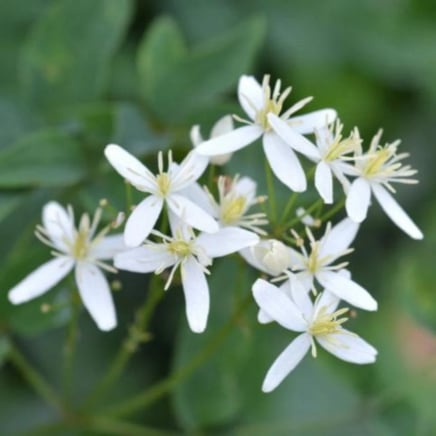
Armandii Snowdrift Clematis
Felco Ergonomic Hand Pruner

Felco Ergonomic Hand Pruner
Mira Garden Trellis Large

Mira Garden Trellis Large
Pruning New Clematis
New transplants require different care from established plants. Instead of growing ample blooms this year, you’ll want it to sprout an extensive root system that anchors it to the soil. A little pruning after transplanting helps clematis establish in the garden.
Type 1
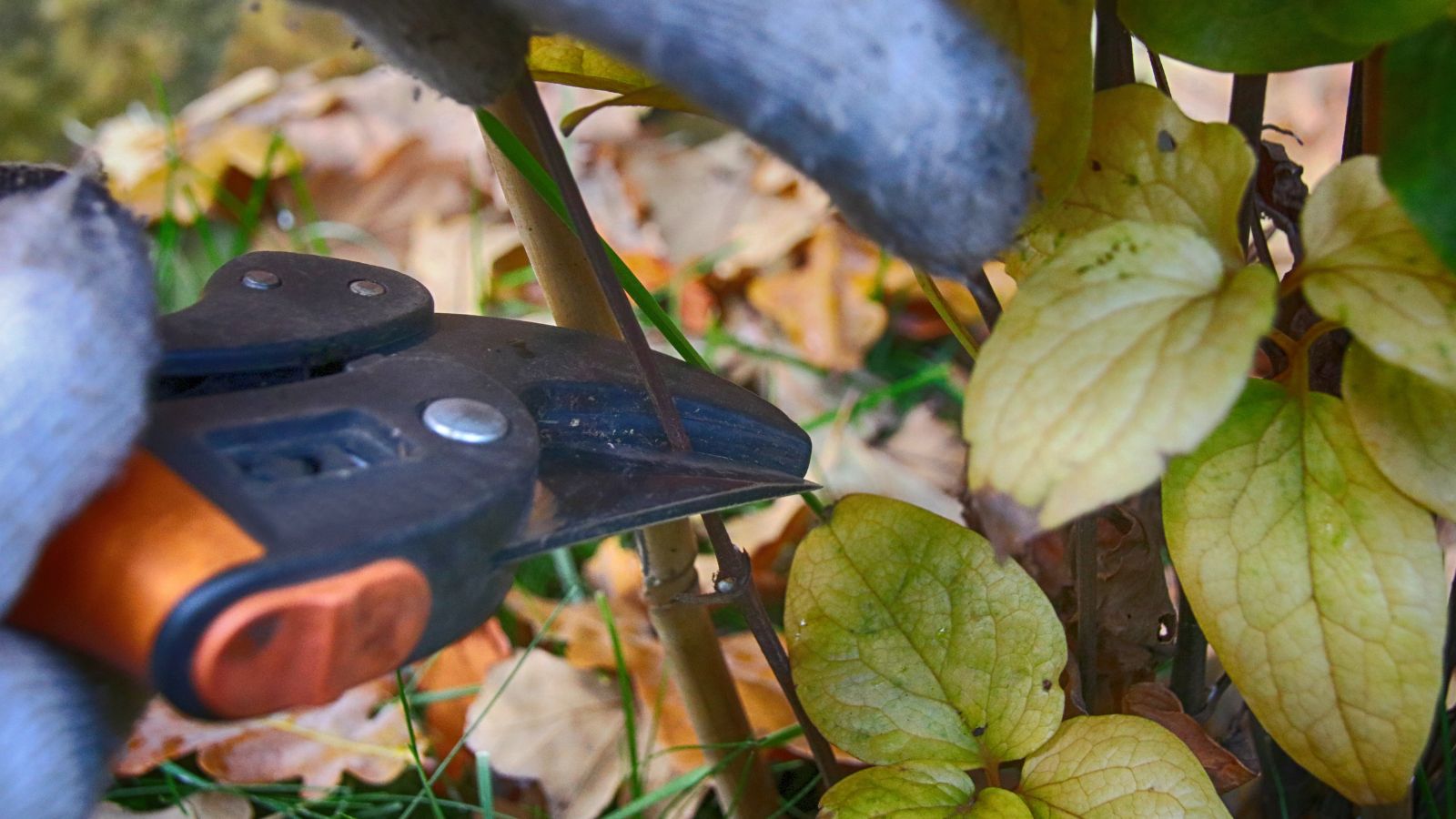 Cut back type 1 clematis types 6-12 inches from the ground in winter or early spring.
Cut back type 1 clematis types 6-12 inches from the ground in winter or early spring. Type 1 vines bloom in late winter or early spring from old growth. Their deciduous stems grow flower buds early in the growing season that open before most other clematises. In mild climates, this type may bloom in fall or winter instead of spring.
If you just planted this type, cut it back to within 6-12” of the ground. Ensure each stem has a few leaf buds so that new growth sprouts after pruning.
The next winter or early spring, cut the plant back again to within 6-12” of the soil. Leave two to three buds per stem, and train the new vines that sprout so they climb your trellis, arbor, or obelisk.
Type 2
 Train the tender new growth of type 2 clematis onto supports like a trellis.
Train the tender new growth of type 2 clematis onto supports like a trellis. Type 2 plants bloom from new shoots in summer or early fall. They are more lenient on pruning because they sprout from new growth rather than last year’s growth.
Prune new transplants the same way as type 1 clematises. Cut back the long stems to within a foot of the ground and leave two to three buds per stem.
Next year, before the buds open, repeat the process by pruning the plants back again. Train the new stems that grow onto supports, and follow a normal pruning regimen for established type 2 clematis plants.
Type 3
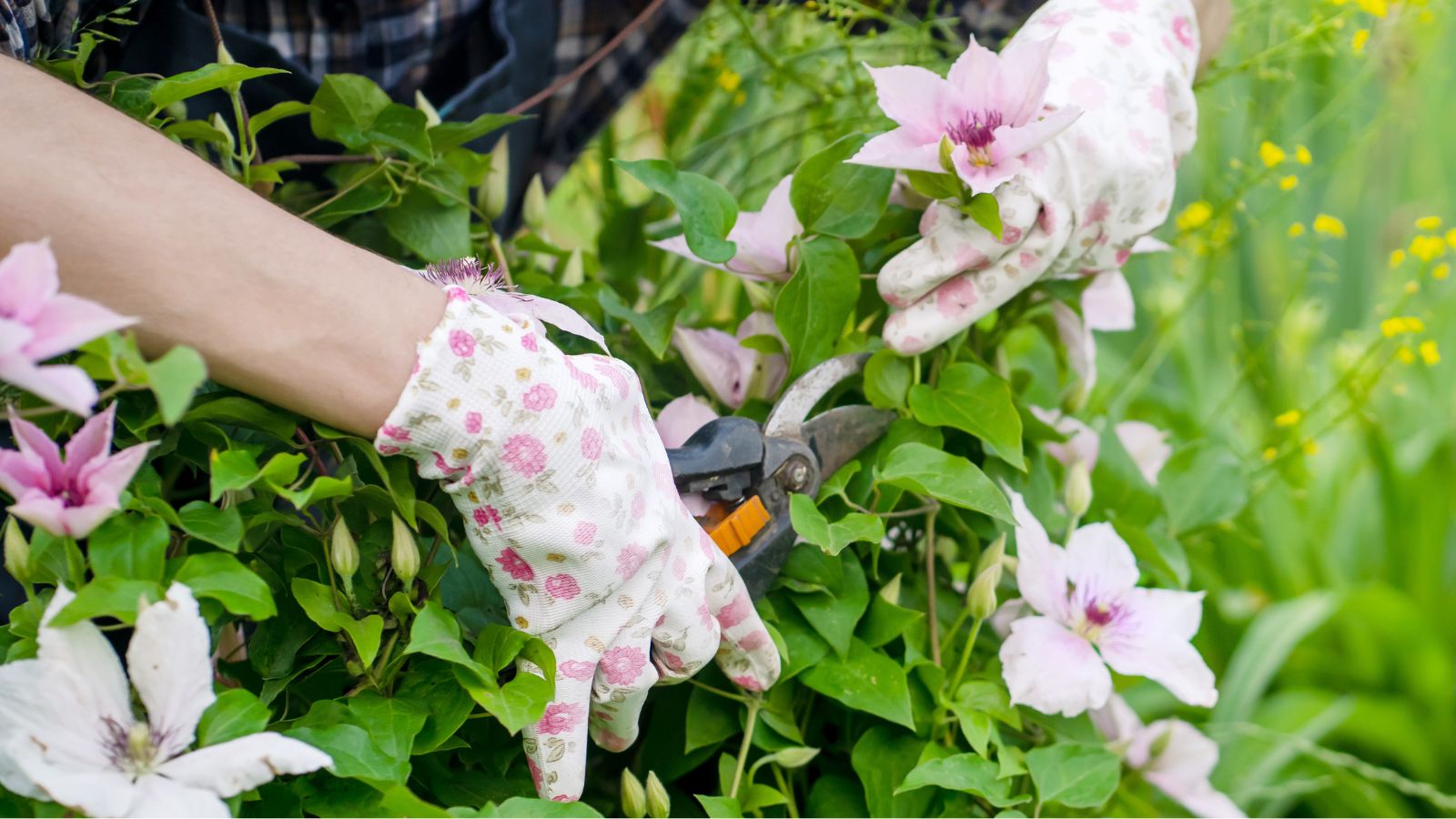 Type 3 clematis blooms twice a year.
Type 3 clematis blooms twice a year. Type 3 deciduous clematises are the most productive, as they bloom twice a year instead of once! They’ll flower in spring off of last year’s growth, and they’ll flower again later in the growing season off of new growth.
Though you’ll sacrifice some of their blooms, it’s a good idea to cut them back after transplanting, like you would with types 1 and 2 clematises. Then, prune their shoots again the next year and support the new stems that sprout.
Herbaceous Clematis
 Try a herbaceous clematis variety in compact spaces.
Try a herbaceous clematis variety in compact spaces. Herbaceous clematises are different than most! They sprout perennially from underground roots and lack deciduous, aboveground vines. When the first frost arrives, these tender stems die back to their underground roots.
These plants perform like other flowering perennials, growing upright and in clumps. Though their flowers are often smaller than the vining clematis varieties, the plants are gorgeous and perfect for tight spaces in the garden.
Herbaceous types don’t require pruning after transplanting unless you’re planting in the fall. Prune back fall-planted specimens to the ground to prepare them for winter.
Evergreen Clematis
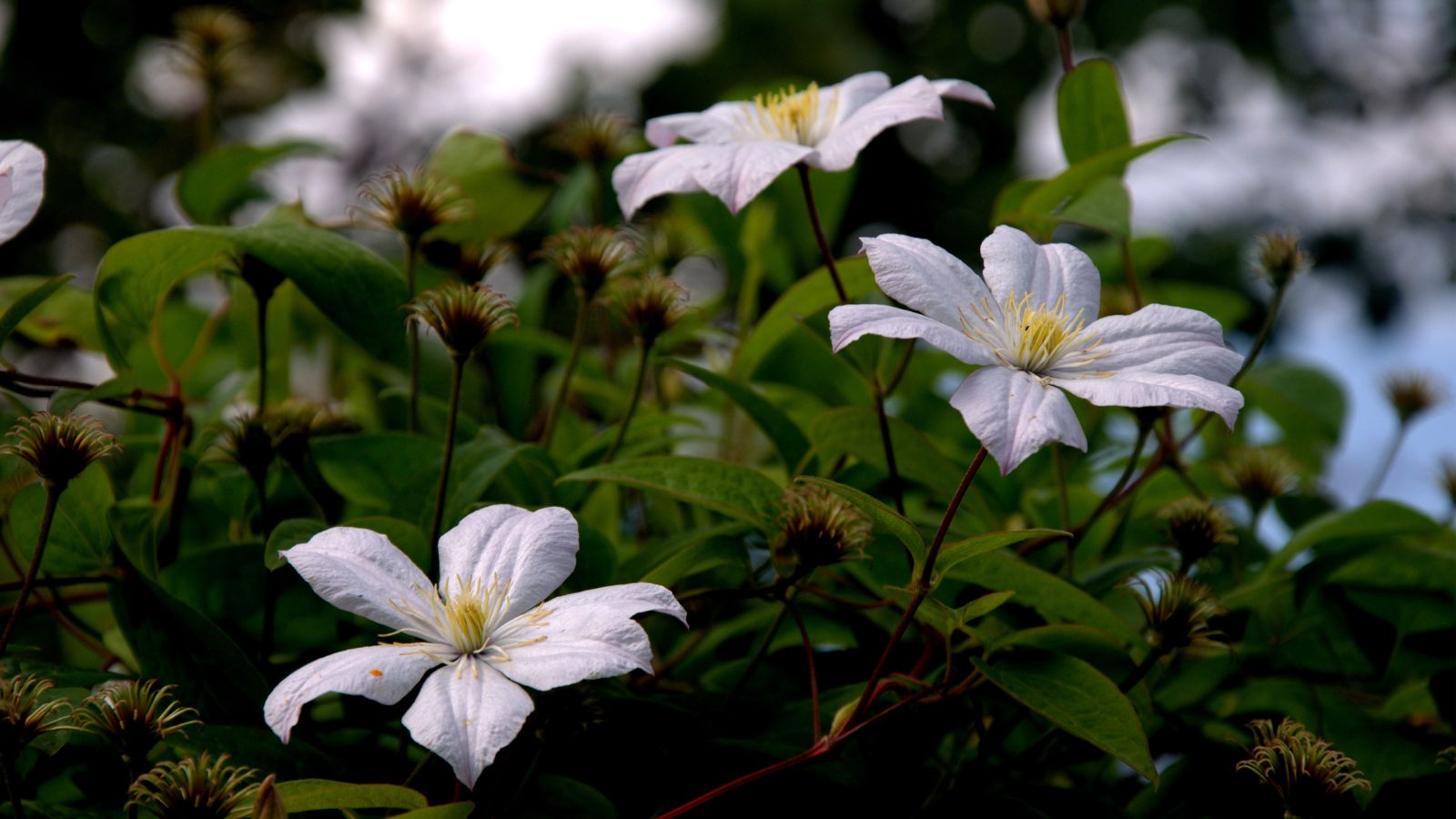 Don’t prune evergreen clematis shoots until the season after planting.
Don’t prune evergreen clematis shoots until the season after planting. Evergreen clematises are the final ones to consider! They retain their green leaves throughout the winter, and they sprout new blooms and shoots once spring and summer arrive.
Don’t prune evergreen shoots after transplanting. Instead, let the young stems grow and train them on supports as they lengthen.
Pruning Established Clematis
After your clematises grow for two years or more, they may look bushy and overgrown! Pruning established clematis vines is a different process from cutting young ones. Learn which type of clematis you have, then prune it accordingly.
Type 1
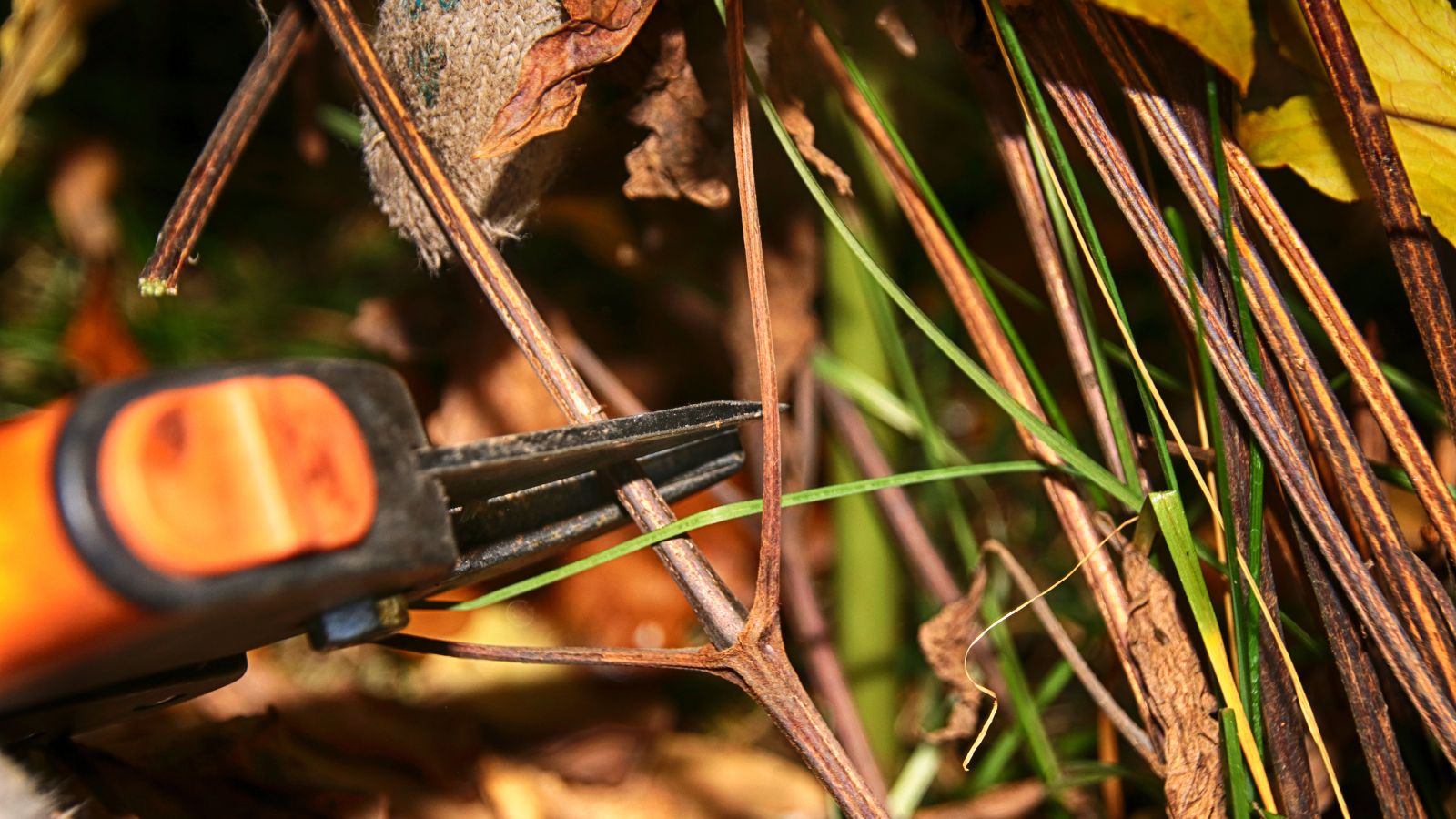 Prune type 1 clematis after they bloom.
Prune type 1 clematis after they bloom. The best time for pruning clematis varieties of the first group is after they bloom. They begin forming flower buds for the next year shortly after they bloom. If you wait too long and prune them while the flower buds are forming, you’ll cut off next year’s blooms!
Use these steps as guidelines, and find a regimen that works for you, your clematises, and your garden. Look to remove dead and diseased shoots, thin weak ones, and cut back the others to strong, healthy buds.
Don’t worry when pruning, as clematis stems are extremely forgiving. They’ll often bloom regardless of whether or not you prune them at the right time!
Type 2
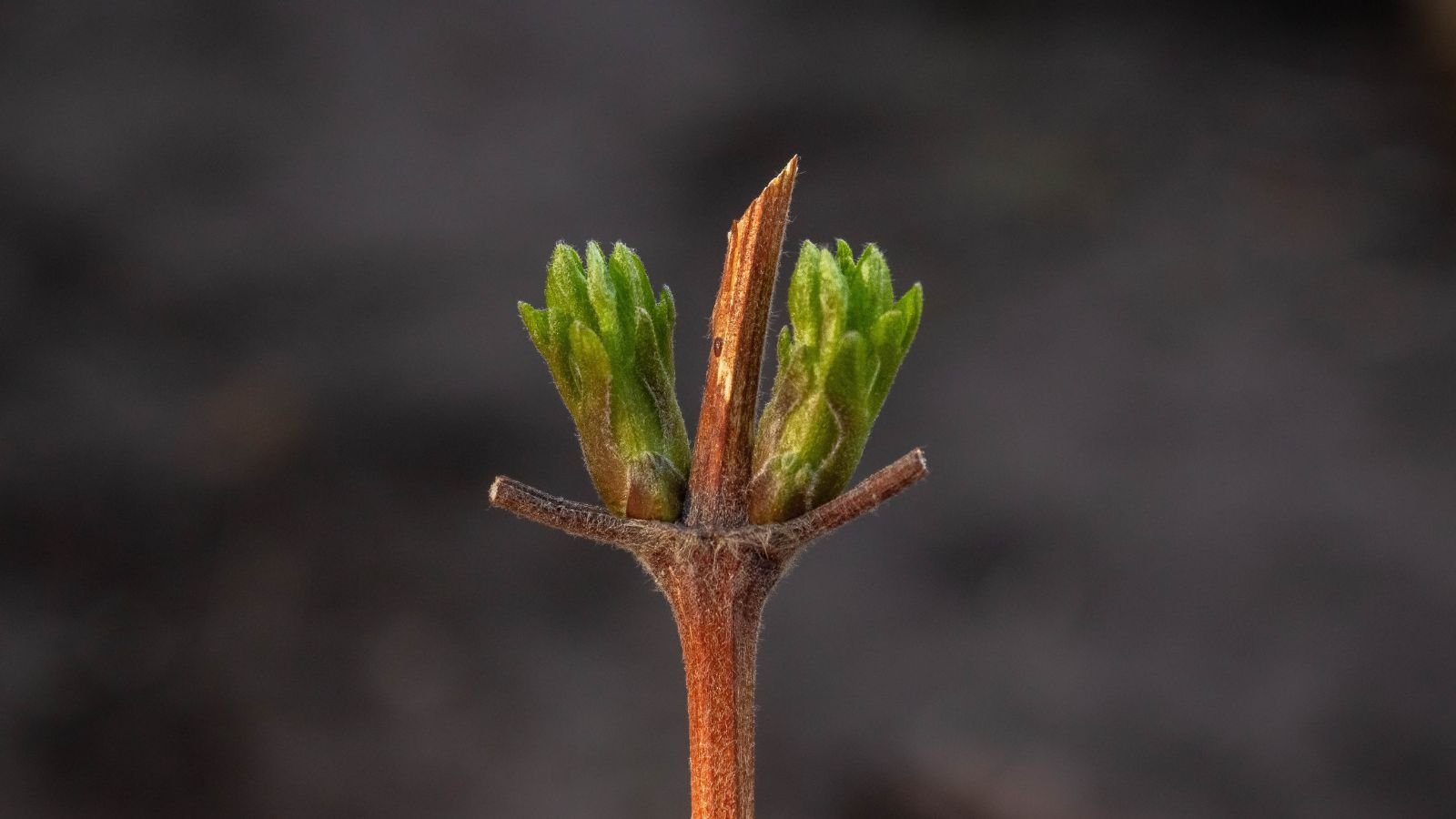 Prune established type 2 clematis when you see their leafy buds begin to open.
Prune established type 2 clematis when you see their leafy buds begin to open. Because type 2 clematises grow blossoms of new growth, they benefit from pruning early in the season when their leafy buds begin opening up. This occurs from late fall to early spring, depending on where you live and how mild your climate is.
Leafy buds may begin opening as early as fall or winter in areas without significant frosts, while they’ll open in early spring in cold-weather areas.
Pruning this clematis type is simple; when their leafy buds begin opening, prune them to within 12-18 inches above the ground. Ensure a few leafy buds remain on the cut stems.
Type 3
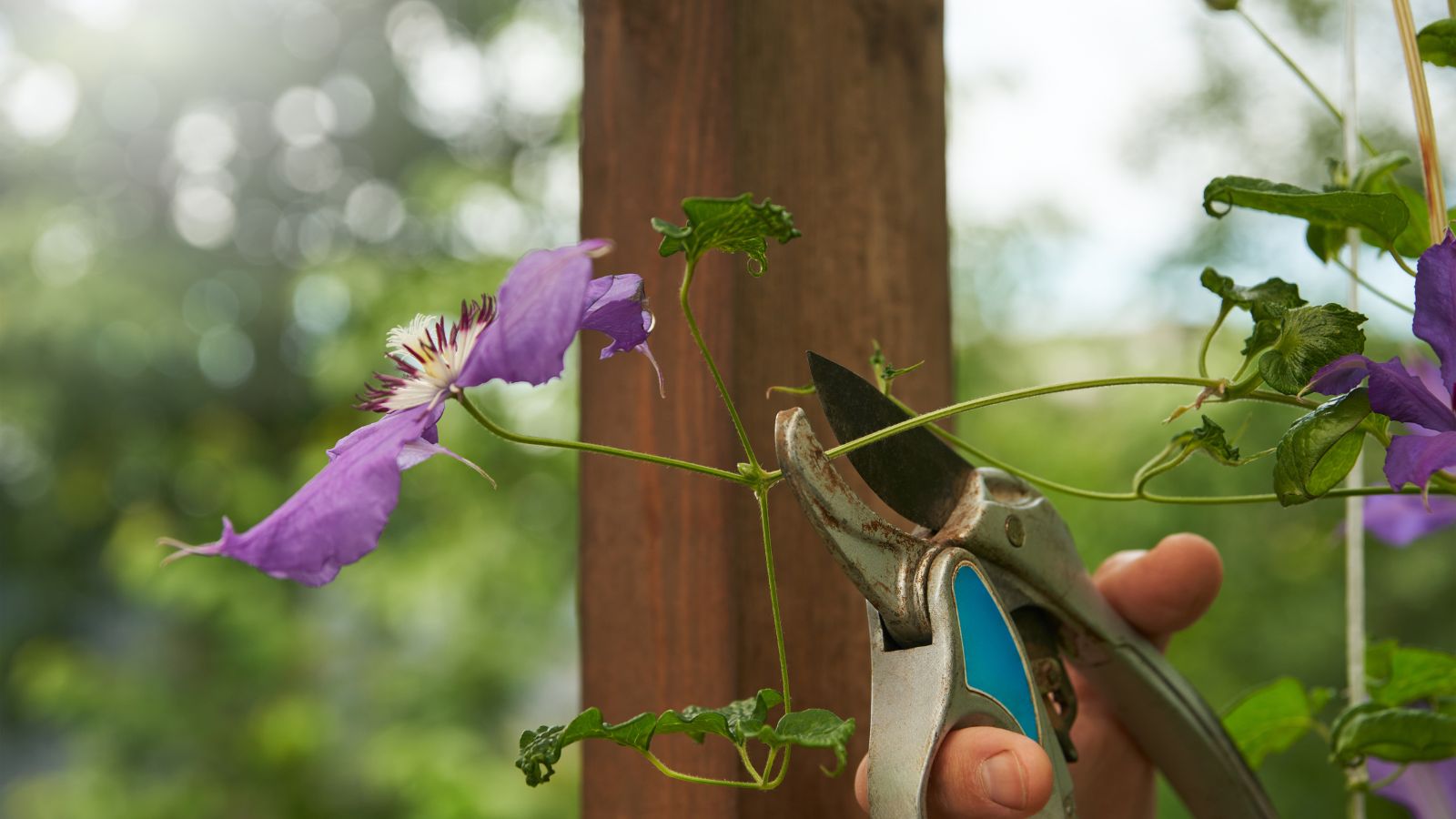 Consider pruning type 3 vines twice a year.
Consider pruning type 3 vines twice a year. Type 3 clematis stems bloom both early and late in the season. They’re tricky to prune, and they defy easy categorization.
You may want to trim these clematises twice a year. They bloom from fall through spring, and again from summer through fall. Remove unruly or tangled stems before they flower from fall through spring. Then, after they bloom, prune them heavily to promote ample blossoms for the second flowering period.
Herbaceous Clematis
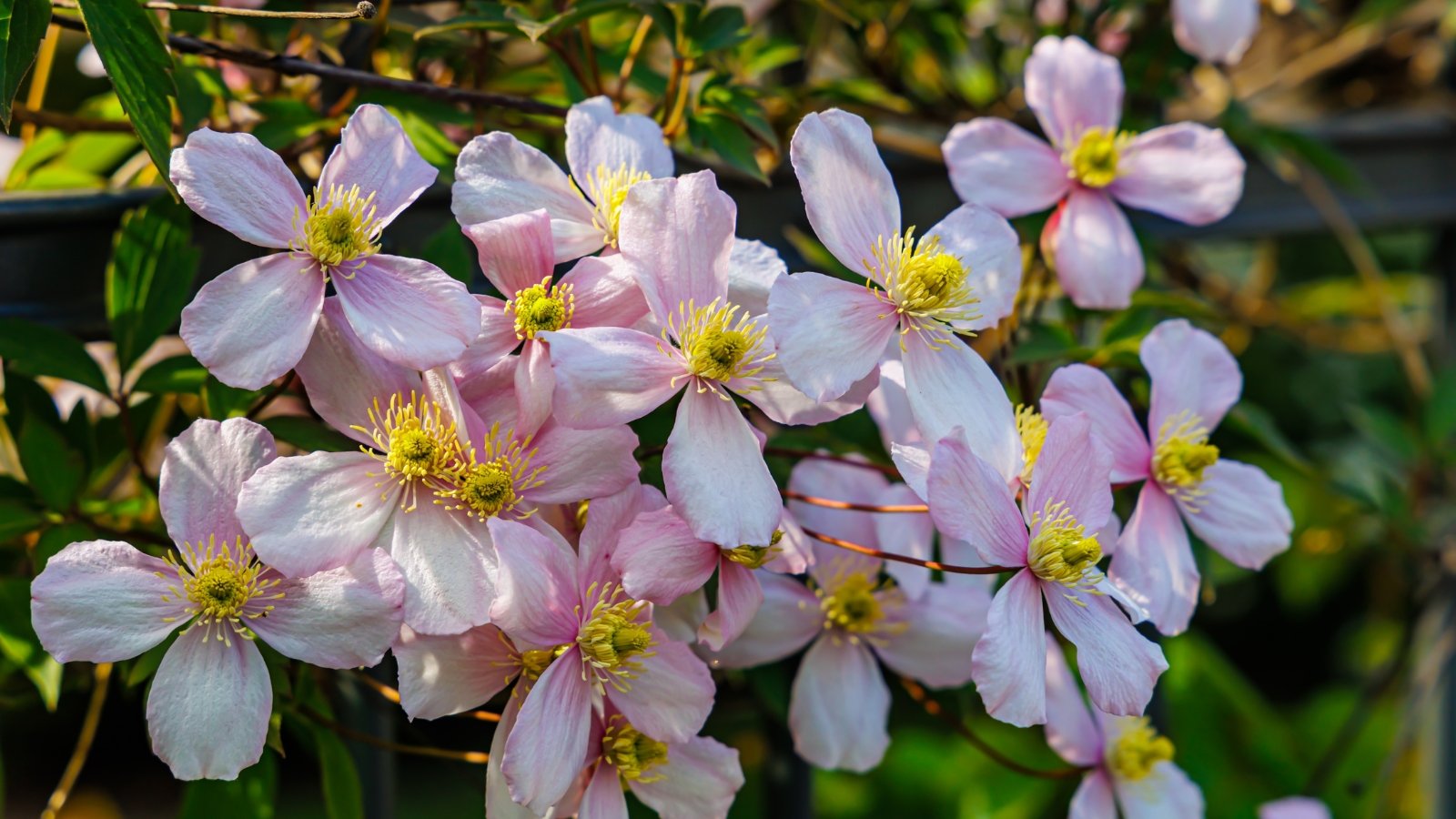 Herbaceous cultivars require little pruning.
Herbaceous cultivars require little pruning. Herbaceous clematis don’t grow as tall as the vining types. They require minimal pruning. Spruce them up each year by removing old, dead growth.
Prune herbaceous cultivars in the fall or spring before new stems emerge. Remove the old shoots to ground level. New ones will emerge from the roots rather than last year’s stems.
Evergreen Clematis
 Keep evergreen types tidy with an annual prune post-flowering.
Keep evergreen types tidy with an annual prune post-flowering.When to prune an evergreen clematis depends on when it flowers. Most evergreen species bloom in spring, though some, like Clematis cirrhosa, flower in winter or early spring.
Prune evergreen clematises after they flower. When the blooms fade, trim back any unruly shoots to healthy ones with ample leaves.
Evergreen types benefit from some cleanup every few years. They tend to develop dead fluff on them from flowers, leaves, and seed heads of past seasons. Trim, thin, and prune them once their flowers fade in late spring or early summer.
Key Takeaways
- Clematises need different pruning techniques according to their group.
- Find which type you have by noting its bloom period and growth habit.
- Deciduous, vining clematises have three groups: types 1, 2, and 3.
- If you’re unsure when to prune your plant, note when it blooms and prune it after the blooms fade to avoid lopping off the flowers.
Frequently Asked Questions
If you don’t prune at all, vining types may grow leggy and overgrown! They’ll ramble endlessly to extreme lengths depending on their type. Let them grow without pruning to see how long they can get.
Yes, it will! This method is preferable for herbaceous types. For vining types, it may delay flowering, but it likely won’t kill the plant.
Clematises from nurseries and retailers should have a tag on them that tells you what type they are. If they don’t, you’ll want to note their flower type and color, when they bloom, and whether they’re evergreen, herbaceous, or deciduous. These details can help you find the variety online or in clematis guidebooks.


 3 weeks ago
16
3 weeks ago
16





















 English (US) ·
English (US) ·  French (CA) ·
French (CA) ·